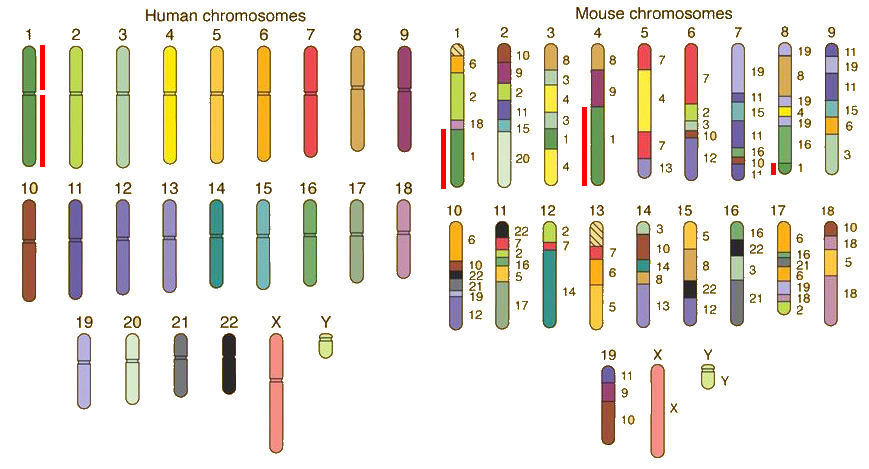
Synteny between human and mouse chromosomes
Synteny
is the homology
between chromosome regions of different
species. Syntenic relationships were originally
determined by comparison of recombination maps for
homologous loci among species: these studies showed that
many loci were in the same relative order across
species. The diagram shows the alignment of two mammal
species, the 2n=46
human chromosomes on the 2n=40 mouse chromosomes. Note that gene
regions tend to remain together in large blocks, rather
than being closely intermingled.
For example, as indicated by the red bars, the human Chromosome 1 occurs in two large blocks, corresponding to the short and long arms of mouse Chromosomes 1 & 4 respectively, with a small bit on mouse Chromosome 8. The long arm of Chromosome 21, which includes the Down Syndrome Critical Region, occurs intact on mouse Chromosome 16: mice can therefore serve as a useful animal genetic model of Down Syndrome. The X & Y chromosomes of the two species are almost entirely homologous, as expected because the the basic sex-determining genetic mechanisms is shared by all mammals.
For example, as indicated by the red bars, the human Chromosome 1 occurs in two large blocks, corresponding to the short and long arms of mouse Chromosomes 1 & 4 respectively, with a small bit on mouse Chromosome 8. The long arm of Chromosome 21, which includes the Down Syndrome Critical Region, occurs intact on mouse Chromosome 16: mice can therefore serve as a useful animal genetic model of Down Syndrome. The X & Y chromosomes of the two species are almost entirely homologous, as expected because the the basic sex-determining genetic mechanisms is shared by all mammals.